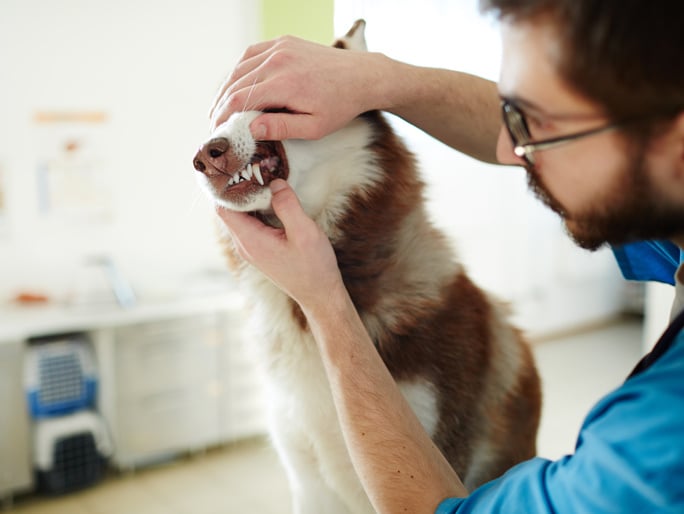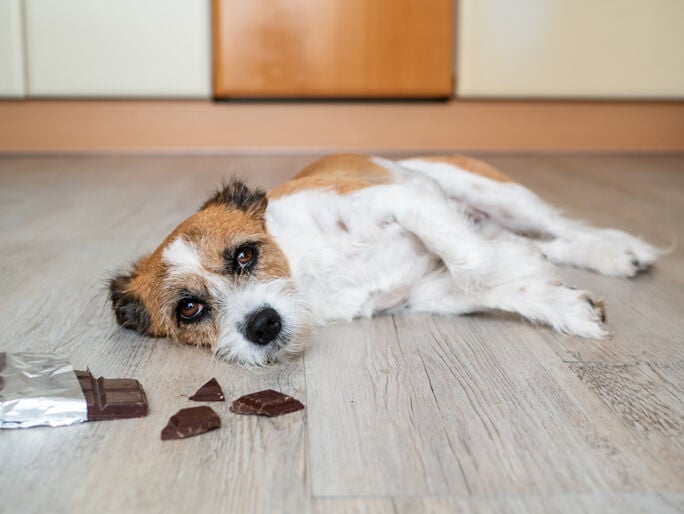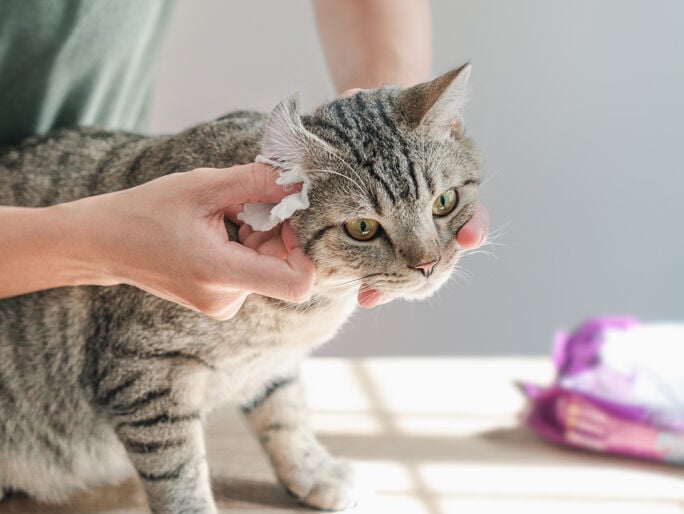how to brush dog teeth and cat teeth
Brushing teeth can really help with pet dental care.
Dental care is an important part of oral health, but pets aren’t usually pros at dental hygiene. Taking time for toothbrushing as part of your daily petcare routine can help your dog or cat have a healthier (and happier) mouth.

Yes, you should brush your pet’s teeth
- Helps manage stinky breath
- Can reduce bacteria-laden plaque on teeth
- Helps slow the buildup of tartar
- Can help prevent gum disease
- Helps you spot tooth troubles

Four things you need to brush pet teeth — and two you don’t
- Your dog or cat
- Dog or cat toothpaste
- Dog or cat toothbrush
- A friend to help, if possible
- NO human toothpaste – it’s not designed for pet mouths and can be toxic to them!
Get ready to brush your pet’s teeth at home
How to: Brush your pet’s teeth
Watch now for tips on safe and effective ways to help your pet’s oral health. Click the video to see more!
Be loving, be patient, be ready for slobber! Both you and your pet need to feel safe and comfortable to make brushing work, so take it slow.
Before you start brushing…
Ditch the human toothbrush and toothpaste — human toothpaste can be toxic for pets! There are many pet-safe toothpaste options to try, so just ask your veterinary team what pet pastes and toothbrushes they recommend.
Also, because even the mellowest pet can find ways to wiggle out of your hands, consider recruiting a pet-loving friend to help during your brushing sessions.
- Step 1: Pet mouth, meet human hands
Start by helping your pet get used to the weirdness of your hands near their mouth. Don’t worry if you can’t do much on the first try — some pets need days, or even weeks, to get used to this new idea.
Use lots of soothing praise as you start petting your BFF’s head. Slowly work your hand down to their mouth and lightly rub the side of their lips.
Stop at any point if your pet seems reluctant or fearful and try again in a few hours, or even another day, when your pet seems more mellow with the process. - Step 2: Gently lift their lips
If your pet seems cool, use a fingertip to gently lift the side of your pet’s top lip to take a look at their side teeth.
Just look as far forward and backward as is comfortable. Don’t try to open their mouth — just focus on the outside part of the teeth.
Ready to add the lower lip? Gently lift their top lip with the finger of one hand, then and use the thumb of your other hand to pull down the lower lip.
Again, don’t try to open their mouth. Just gently move their lips out of the way to examine their bottom teeth.
When you’re done with your check, lightly run your finger along your pet’s teeth and gums. This will help to prepare your pet for the next step in your home dental journey — brushing. - Step 3: Time to brush!
Squeeze your pet toothpaste onto a piece of gauze or pet toothbrush before you begin.
Let your pet taste a dab of the pet toothpaste (mmm). Then use your gauze or toothbrush to gently rub the toothpaste in circular patterns on the outside of their upper and lower teeth.
Start your routine with only a few teeth. Slowly add more time and teeth each time until you can manage roughly 30 seconds on each side of your pet’s mouth.
Try to aim for a one-minute session at least three days a week, or at least as often as you and your toothy friend can comfortably manage.
Watch out for dental danger signs
Seeing swollen gums, yellowed or brown teeth? These can be signs of periodontitis (dental disease).
Plus, if your pet seems to be in pain when you brush their teeth, especially around any particular area, that could also be a problem your veterinary team should check out soon.
Ask your veterinary team about a professional dental cleaning, which can get below the gumline to remove crusty yellow and brown tartar before it can lead to painful gum inflammation, tooth loss, and more.

An Optimum Wellness Plan is a smart way to tackle teeth troubles

Our Optimum Wellness Plans® are affordable yearlong packages of essential preventive care. They're designed for different needs, ages, and lifestyles, and many include a professional dental cleaning that can help treat tartar and prevent advanced dental disease.
Talk to your Banfield vet to find out which package is best for your pet.
Mentioned in this article

Dental disease in dogs and cats
Danger signs that may mean pain or infection.
Signs of dental disease

Professional dental cleanings
How and why dental cleanings can help oral health.
Why cleanings count

Need advice on flea control? Ping Pet Chat™!
Whether it's 3 a.m. or 3 p.m., connect with a real veterinary professional for immediate petcare advice. It's included in all Optimum Wellness Plans®!
Log in to start chattingHow Banfield can help with your pet’s dental care and oral health
Banfield can help prevent and treat dental disease in dogs and cats. Ask us about tips and tricks for brushing, guidance on dental health, and, if your pet could use a professional dental cleaning, to help eliminate tartar that regular brushing just can’t reach.

Regular physical and oral exams. We can help evaluate the overall health of your pet, including their mouth and teeth.
Regular professional dental cleanings. Professional pet dental cleanings can help tackle the buildup of smelly, sticky tartar on your pet’s teeth, helping your pet avoid painful periodontal disease, tooth loss, and truly stinky pet breath.
Does your pet absolutely refuse to have their teeth brushed? Reach out to your veterinary team. We can help suggest additional ways to help reduce plaque and tartar.
 Mites and mange
Mites and mange Podcast - Not Just Fluff
Podcast - Not Just Fluff



